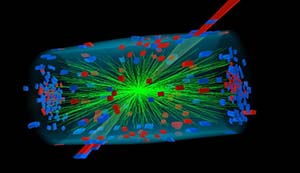CERN collides heavy nuclei at new record high energy
30. 11. 2015 | CERN | www.home.cern
After the successful restart of the Large Hadron Collider (LHC) and its first months of data taking with proton collisions at a new energy frontier, the LHC is moving to a new phase, with the first lead-ion collisions of season 2 at an energy about twice as high as that of any previous collider experiment.
Early in the life of our universe, for a few millionths of a second, matter was a very hot and very dense medium – a kind of primordial soup of particles, mainly composed of fundamental particles known as quarks and gluons. In today’s cold Universe, the gluons “glue” quarks together into the protons and neutrons that form bulk matter, including us, as well as other kinds of particles.

Increasing the energy of collisions will increase the volume and the temperature of the quark and gluon plasma, allowing for significant advances in understanding the strongly-interacting medium formed in lead-ion collisions at the LHC. As an example, in season 1 the LHC experiments confirmed the perfect liquid nature of the quark-gluon plasma and the existence of “jet quenching” in ion collisions, a phenomenon in which generated particles lose energy through the quark-gluon plasma. The high abundance of such phenomena will provide the experiments with tools to characterize the behaviour of this quark-gluon plasma. Measurements to higher jet energies will thus allow new and more detailed characterization of this very interesting state of matter.
Read more at CERN
Image Credit: CERN
-jk-




